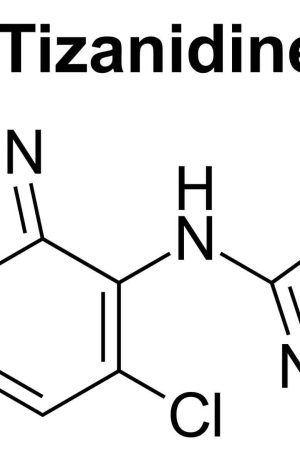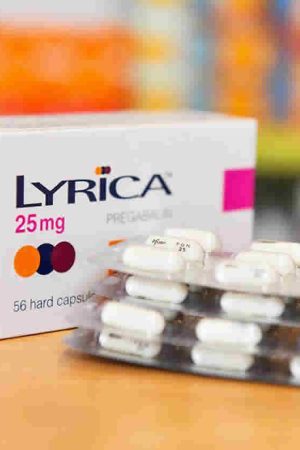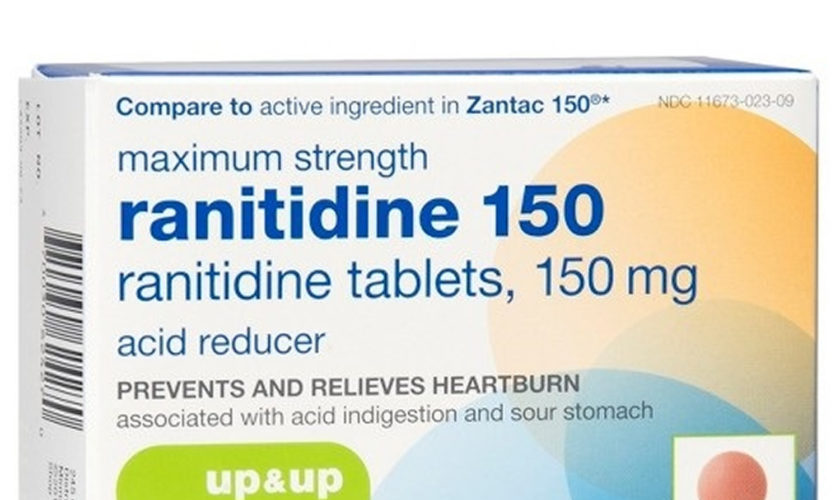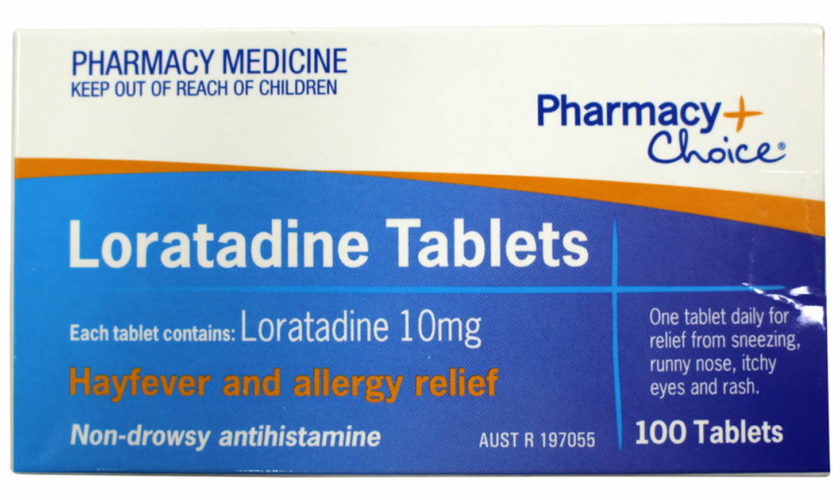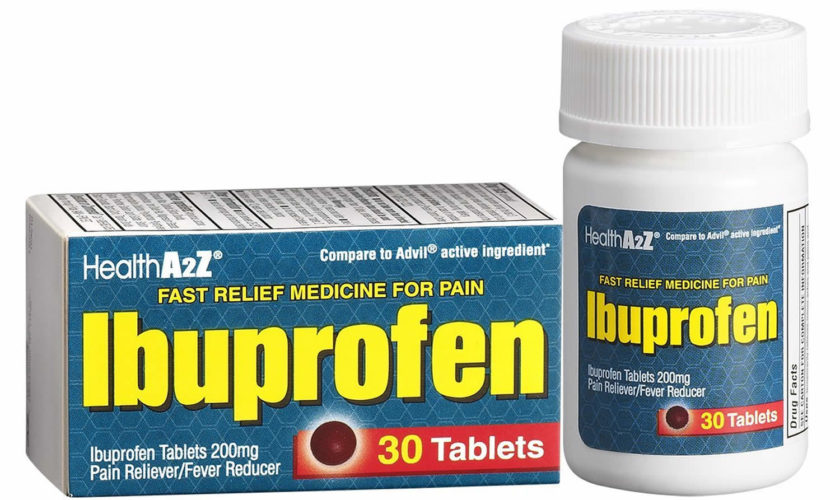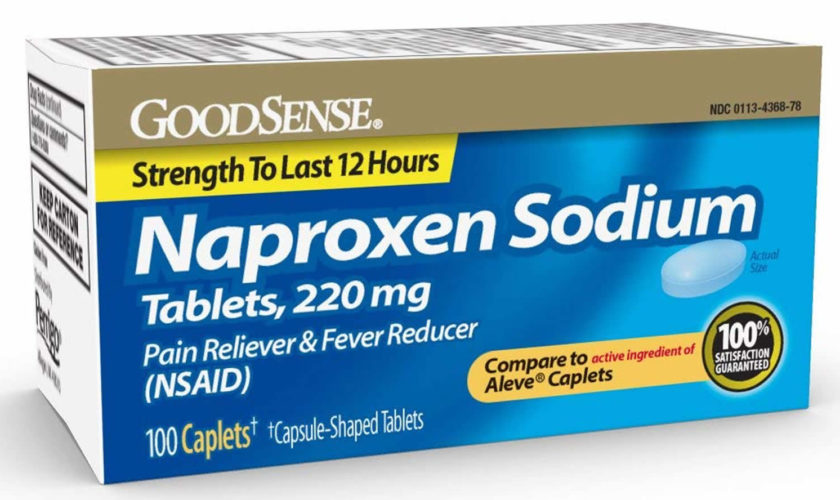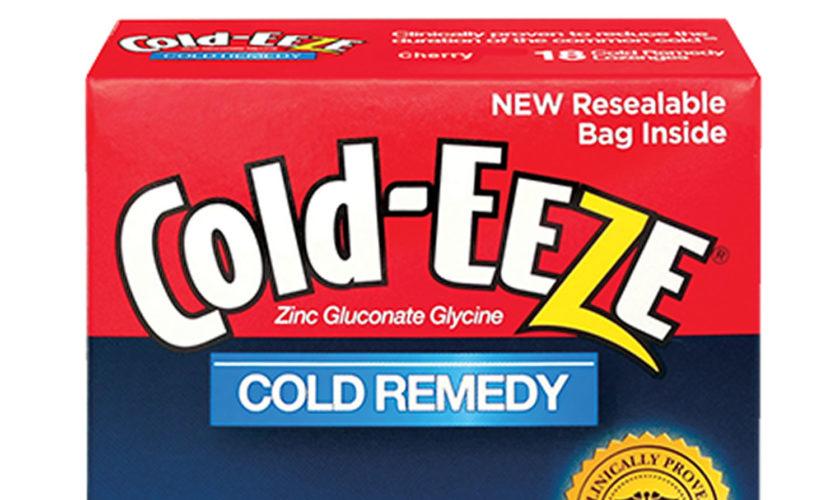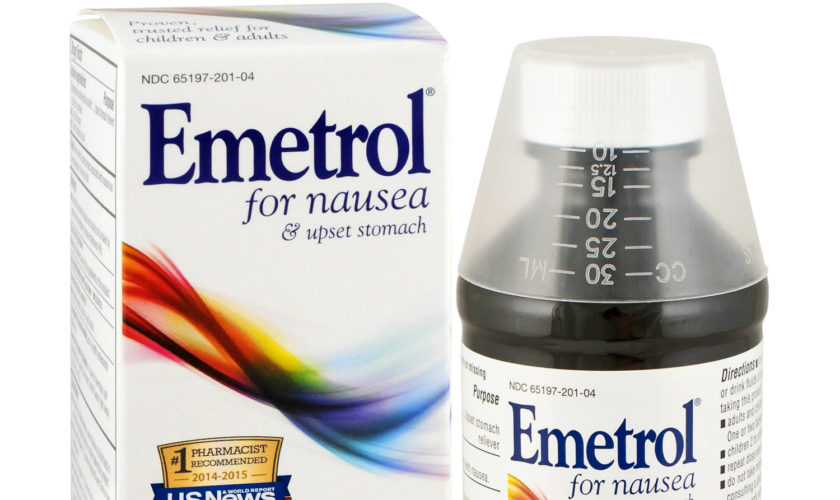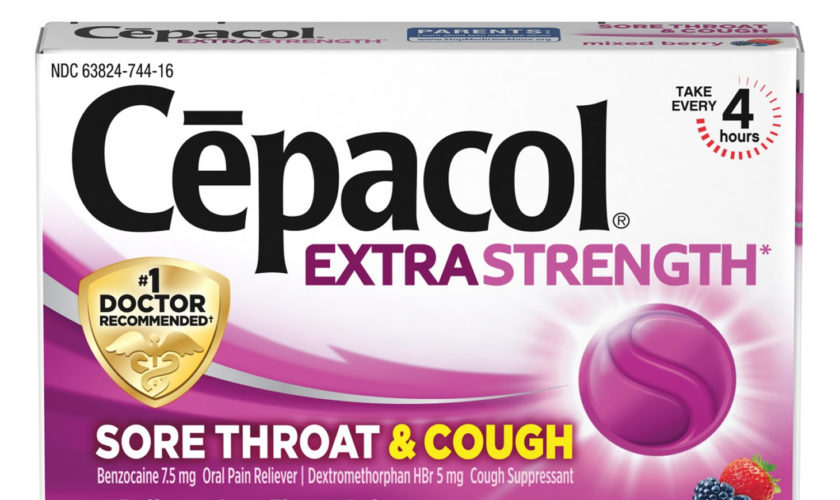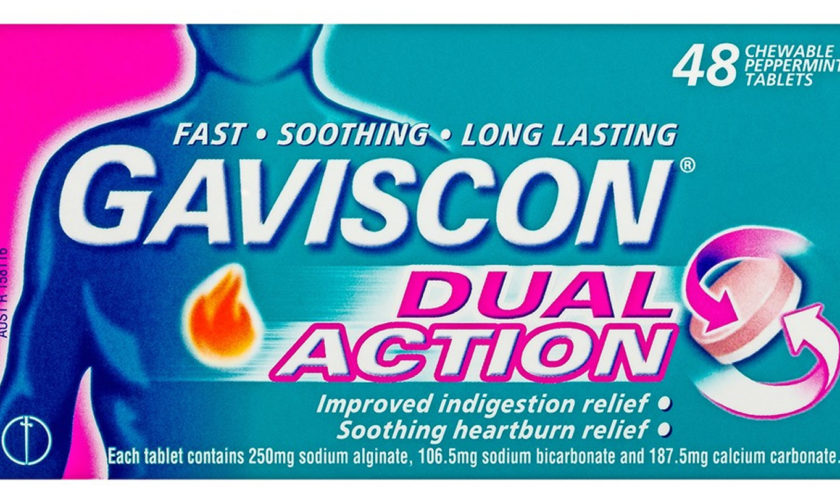What is sodium bicarbonate
Sodium bicarbonate (NaHCO3), also known as baking soda, is used to relieve heartburn, sour stomach, or acid indigestion by neutralizing excess stomach acid. When used for this purpose, sodium bicarbonate is said to belong to the group of medicines called antacids. Sodium bicarbonate may be used to treat the symptoms of stomach or duodenal ulcers. Sodium bicarbonate is also used to make the blood and urine more alkaline in certain conditions.
Sodium bicarbonate is a white, crystalline powder that is commonly used as a pH buffering agent, an electrolyte replenisher, systemic alkalizer and in topical cleansing solutions. Sodium bicarbonate is the monosodium salt of carbonic acid with alkalinizing and electrolyte replacement properties. Slightly alkaline (bitter) taste, pH (of freshly prepared 0.1 molar aqueous solution): 8.3 at 77 °F and pH (of saturated solution): 8-9. Sodium bicarbonate in water dissociates to provide sodium (Na+) and bicarbonate (HCO3¯ ) ions. Sodium (Na+) is the principal cation of the extracellular fluid and plays a large part in the therapy of fluid and electrolyte disturbances. Bicarbonate (HCO3¯ ) is a normal constituent of body fluids and the normal plasma level ranges from 24 to 31 mEq/liter. Ion formation increases plasma bicarbonate and buffers excess hydrogen ion concentration, resulting in raised blood pH. Plasma concentration is regulated by the kidney through acidification of the urine when there is a deficit or by alkalinization of the urine when there is an excess. Bicarbonate anion is considered “labile” since at a proper concentration of hydrogen ion (H+) it may be converted to carbonic acid (H2CO3) and thence to its volatile form, carbon dioxide (CO2) excreted by the lung. Normally a ratio of 1:20 (carbonic acid; bicarbonate) is present in the extracellular fluid. In a healthy adult with normal kidney function, practically all the glomerular filtered bicarbonate ion is reabsorbed; less than 1% is excreted in the urine.
Sodium bicarbonate should not be given to young children (up to 6 years of age) unless prescribed by their doctor. Since children cannot usually describe their symptoms very well, a doctor should check the child before giving sodium bicarbonate. The child may have a condition that needs other treatment. If so, sodium bicarbonate will not help and may even cause unwanted effects or make the condition worse.
Sodium bicarbonate for oral use is available without a prescription.
This product is available in the following dosage forms:
- Tablet
- Solution
- Powder
- Granule
- Capsule
Storage
Store sodium bicarbonate medicine in a closed container at room temperature, away from heat, moisture, and direct light. Keep from freezing.
Keep out of the reach of children.
Do not keep outdated medicine or medicine no longer needed.
Taking sodium bicarbonate with food, alcohol and other medicines
It’s best to take sodium bicarbonate with food or soon after eating because this is when you’re most likely to get indigestion or heartburn.
The effect of sodium bicarbonate medicine may also last longer if taken with food.
Sodium bicarbonate can affect how well other medicines work, so don’t take other medicines within two to four hours of taking an antacid (see Drug Interactions below).
You can drink alcohol while taking sodium bicarbonate, but alcohol can irritate your stomach and make your symptoms worse.
Precautions
If this medicine has been ordered by your doctor and if you will be taking it regularly for a long time, your doctor should check your progress at regular visits. This is to make sure the medicine does not cause unwanted effects.
Sodium bicarbonate is contraindicated in patients with chloride loss from vomiting or from continuous gastrointestinal suction, who are receiving diuretics that are known to produce a hypochloremic alkalosis, with metabolic or respiratory alkalosis, with hypocalcemia in which alkalosis may produce tetany, hypertension, convulsions or congestive heart failure, and in patients in whom the administration of sodium would be clinically detrimental.
Do not take sodium bicarbonate:
- Within 1 to 2 hours of taking other medicine by mouth. To do so may keep the other medicine from working properly.
- For a long period of time. To do so may increase the chance of side effects.
For patients on a sodium-restricted diet:
Sodium bicarbonate contains a large amount of sodium. If you have any questions about this, check with your health care professional.
For patients taking sodium bicarbonate as an antacid:
- Do not take sodium bicarbonate medicine if you have any signs of appendicitis (such as stomach or lower abdominal pain, cramping, bloating, soreness,
- nausea, or vomiting). Instead, check with your doctor as soon as possible.
- Do not take sodium bicarbonate with large amounts of milk or milk products. To do so may increase the chance of side effects.
- Do not take sodium bicarbonate for more than 2 weeks or if the problem comes back often. Instead, check with your doctor. Antacids should be used only for occasional relief, unless otherwise directed by your doctor.
Serum bicarbonate
Bicarbonate (HCO3−, sometimes reported as total CO2) is an electrolyte, a negatively charged ion that is used by the body to help maintain the body’s acid-base (pH) balance. It also works with the other electrolytes (sodium, potassium, and chloride) to maintain electrical neutrality at the cellular level. This test measures the total amount of carbon dioxide (CO2) in the blood, which occurs mostly in the form of bicarbonate (HCO3-). The CO2 is mainly a by-product of various metabolic processes.
The lungs provide oxygen and regulate CO2. The CO2 is produced by the body and is in balance with bicarbonate bicarbonate (HCO3−). The overall balance of these chemicals is an indication of the functional well-being of several basic body functions. They are important in maintaining a wide range of body functions, including heart and skeletal muscle contraction and nerve impulse conduction.
Sodium, along with other electrolytes such as potassium, chloride, and bicarbonate (or total CO2), helps cells function normally and helps regulate the amount of fluid in the body. While sodium is present in all body fluids, it is found in the highest concentration in the blood and in the fluid outside of the body’s cells. This extracellular sodium, as well as all body water, is regulated by the kidneys.
Measuring bicarbonate as part of an electrolyte or metabolic panel may help diagnose an electrolyte imbalance or acidosis or alkalosis. Acidosis and alkalosis describe the abnormal conditions that result from an imbalance in the pH of the blood caused by an excess of acid or alkali (base). This imbalance is typically caused by some underlying condition or disease.
The body’s maintenance of a healthy pH range for blood and tissues that is slightly basic (pH between 7.35 – 7.45). This balance is achieved through the use of systems in the blood (which help to minimize pH changes) and by the lungs and kidneys, which eliminate excess amounts of acids or bases from the body.
The lungs and kidneys are the major organs involved in regulating blood pH through the removal of excess bicarbonate.
- The lungs flush acid out of the body by exhaling CO2. Raising and lowering the respiratory rate alters the amount of CO2 that is breathed out, and this can affect blood pH within minutes.
- The kidneys eliminate acids in the urine and they regulate the concentration of bicarbonate (HCO3−, a base) in blood. Acid-base changes due to increases or decreases in HCO3− concentration occur more slowly than changes in CO2, taking hours or days.
Any disease or condition that affects the lungs, kidneys, metabolism, or breathing has the potential to cause acidosis or alkalosis.
The bicarbonate test gives a healthcare practitioner a rough estimate of a patient’s acid-base balance. This is usually sufficient, but measurements of gases dissolved in the blood (blood gases) may be done if more information is needed. Bicarbonate is typically measured along with sodium, potassium, and possibly chloride in an electrolyte panel as it is the balance of these molecules that gives the healthcare practitioner the most information.
The bicarbonate (or total CO2) test is usually ordered along with sodium, potassium, and chloride as part of an electrolyte panel. The electrolyte panel is used to help detect, evaluate, and monitor electrolyte imbalances and/or acid-base (pH) imbalances (acidosis or alkalosis). It may be ordered as part of a routine exam or to help evaluate a variety of chronic or acute illnesses.
This testing may be ordered when acidosis or alkalosis is suspected or when someone has an acute condition with symptoms that may include the following:
- Prolonged vomiting and/or diarrhea
- Weakness, fatigue
- Difficulty breathing (respiratory distress)
Electrolytes may be ordered at regular intervals when a person has a disease or condition or is taking a medication that can cause an electrolyte imbalance. Electrolyte panels or basic metabolic panels are commonly used to monitor treatment of certain problems, including high blood pressure (hypertension), heart failure, and liver and kidney disease.
An electrolyte panel may be used to help monitor conditions, such as kidney disease, lung disorders, and high blood pressure (hypertension). When acidosis or alkalosis is identified, bicarbonate (as part of the electrolyte panel) and blood gases may be ordered to evaluate the severity of the pH imbalance. These tests help determine whether it is primarily respiratory (due to an imbalance between the amount of oxygen coming in and CO2 being released) or metabolic (due to increased or decreased amounts of bicarbonate in the blood). They also help monitor treatment until acid-base balance is restored.
What does the test bicarbonate result mean?
When bicarbonate levels are higher or lower than normal, it suggests that the body is having trouble maintaining its acid-base balance, either by failing to remove carbon dioxide through the lungs or the kidneys or perhaps because of an electrolyte imbalance, particularly a deficiency of potassium. Both of these imbalances may be due to a wide range of conditions.
Examples of causes of a low bicarbonate level include:
- Addison disease
- Chronic diarrhea
- Diabetic ketoacidosis
- Metabolic acidosis
- Respiratory alkalosis, which can be caused by hyperventilation
- Shock
- Kidney disease
- Ethylene glycol or methanol poisoning
- Salicylate (aspirin) overdose
- Drugs that may decrease bicarbonate levels include methicillin, nitrofurantoin, tetracycline, thiazide diuretics, and triamterene.
Examples of causes of a high bicarbonate level include:
- Severe, prolonged vomiting and/or diarrhea
- Lung diseases, including COPD
- Cushing syndrome
- Conn syndrome
- Metabolic alkalosis
- Some drugs may increase bicarbonate levels including fludrocortisone, barbiturates, bicarbonates, hydrocortisone, loop diuretics, and steroids.
If bicarbonate levels are too high or low, what treatments can help?
If your bicarbonate is high or low, your healthcare practitioner will identify and treat the underlying cause. For example, high bicarbonate may be caused by emphysema, which may be treated with oxygen therapy and medications, or by severe diarrhea or vomiting, which would be addressed by treating the cause of the diarrhea or vomiting. Low bicarbonate may be caused by diabetic ketoacidosis, for example, which can be addressed in part by fluid and electrolyte replacement and insulin therapy.
If I’ve had a bicarbonate (total CO2) test, why does my doctor want to test my blood gases?
Blood gas tests, in which blood is drawn from an artery instead of a vein, can give your healthcare practitioner more information about your acid-base balance. They can tell your provider whether your lungs are working properly to keep oxygen and carbon dioxide at healthy levels.
Sodium bicarbonate injection
Sodium Bicarbonate Injection is a sterile, nonpyrogenic, hypertonic solution of Sodium Bicarbonate (NaHCO3) in water for injection for administration by the intravenous route as an electrolyte replenisher and systemic alkalizer.
Solution is offered in 8.4% concentration. The solution has an approximate pH of 8.0 (7.5 to 8.5). Carbon dioxide may have been added to adjust the pH of the solution to approximately 8.0.
How is sodium bicarbonate injection supplied
Sodium Bicarbonate Injection, USP is supplied in the following dosage form.
In 50 mL single-dose packages containing a Luer-Jet™ Luer-Lock Prefilled Syringe.
10 individual cartons shrink wrapped as a group of 10 cartons.
| Stock No. | NDC No. | Dosage Form | Con. % | mg/mL (NaHCO3) | mEq/mL (Na+) | mEq/mL (HCO3–) | mEq/Contain- er size (mL) | mOsm/ mL |
| 3352 | 76329-3352-1 | Prefilled Syringe | 8.4% | 84 | 1 | 1 | 50/50 | 2 |
The solution contains no bacteriostat, antimicrobial agent or added buffer and is intended only for use as a single-dose injection. When smaller doses are required, the unused portion should be discarded with the entire unit.
Sodium Bicarbonate, 84 mg is equal to one milliequivalent each of sodium (Na+) and bicarbonate (HCO3¯ ) . Sodium Bicarbonate, USP is chemically designated NaHCO3, a white crystalline powder soluble in water. Water for Injection, USP is chemically designated H2O.
Sodium Bicarbonate Injection- Clinical Pharmacology
Intravenous Sodium Bicarbonate therapy increases plasma bicarbonate, buffers excess hydrogen ion concentration, raises blood pH and reverses the clinical manifestations of acidosis.
Indications and Usage for Sodium Bicarbonate Injection
Sodium Bicarbonate Injection, USP is indicated in the treatment of metabolic acidosis which may occur in severe renal disease, uncontrolled diabetes, circulatory insufficiency due to shock or severe dehydration, extracorporeal circulation of blood, cardiac arrest and severe primary lactic acidosis. Sodium Bicarbonate is further indicated in the treatment of certain drug intoxications, including barbiturates (where dissociation of the barbiturate-protein complex is desired), in poisoning by salicylates or methyl alcohol and in hemolytic reactions requiring alkalinization of the urine to diminish nephrotoxicity of hemoglobin and its breakdown products. Sodium Bicarbonate also is indicated in severe diarrhea which is often accompanied by a significant loss of bicarbonate.
Treatment of metabolic acidosis should, if possible, be superimposed on measures designed to control the basic cause of the acidosis – e.g., insulin in uncomplicated diabetes, blood volume restoration in shock. But since an appreciable time interval may elapse before all of the ancillary effects are brought about, bicarbonate therapy is indicated to minimize risks inherent to the acidosis itself.
Vigorous bicarbonate therapy is required in any form of metabolic acidosis where a rapid increase in plasma total CO2 content is crucial – e.g., cardiac arrest, circulatory insufficiency due to shock or severe dehydration, and in severe primary lactic acidosis or severe diabetic acidosis.
Sodium Bicarbonate Injection Contraindications
Sodium Bicarbonate Injection, USP is contraindicated in patients who are losing chloride by vomiting or from continuous gastrointestinal suction, and in patients receiving diuretics known to produce a hypochloremic alkalosis.
Sodium Bicarbonate Injection Warnings
Solutions containing sodium ions should be used with great care, if at all, in patients with congestive heart failure, severe renal insufficiency and in clinical states in which there exists edema with sodium retention.
In patients with diminished renal function, administration of solutions containing sodium ions may result in sodium retention.
The intravenous administration of these solutions can cause fluid and/or solute overloading resulting in dilution of serum electrolyte concentrations, overhydration, congested states or pulmonary edema.
Sodium Bicarbonate Injection Precautions
General
Do not use unless solution is clear and the container or seal is intact. Discard unused portion.
The potentially large loads of sodium given with bicarbonate require that caution be exercised in the use of Sodium Bicarbonate in patients with congestive heart failure or other edematous or sodium-retaining states, as well as in patients with oliguria or anuria.
Caution must be exercised in the administration of parenteral fluids, especially those containing sodium ions, to patients receiving corticosteroids or corticotropin.
Potassium depletion may predispose to metabolic alkalosis and coexistent hypocalcemia may be associated with carpopedal spasm as the plasma pH rises. These dangers can be minimized if such electrolyte imbalances are appropriately treated prior to or concomitantly with bicarbonate infusion.
Laboratory Tests
The aim of all bicarbonate therapy is to produce a substantial correction of the low total CO2 content and blood pH, but the risks of overdosage and alkalosis should be avoided. Hence, repeated fractional doses and periodic monitoring by appropriate laboratory tests are recommended to minimize the possibility of overdosage.
Sodium Bicarbonate Injection Drug Interactions
Additives may be incompatible; norepinephrine and dobutamine are incompatible with Sodium Bicarbonate solution.
The addition of Sodium Bicarbonate to parenteral solutions containing calcium should be avoided, except where compatibility has been previously established. Precipitation or haze may result from Sodium Bicarbonate/calcium admixtures. NOTE: Do not use the injection if it contains precipitate.
Additives may be incompatible. Consult with pharmacist, if available. When introducing additives, use aseptic technique, mix thoroughly and do not store.
Pregnancy: Teratogenic Effects
Pregnancy Category C. Animal reproduction studies have not been conducted with Sodium Bicarbonate. It is also not known whether Sodium Bicarbonate can cause fetal harm when administered to a pregnant woman or can affect reproduction capacity. Sodium Bicarbonate should be given to a pregnant woman only if clearly needed.
Pediatric
Rapid injection (10 mL/min) of hypertonic Sodium Bicarbonate Injection, USP solutions into neonates and children under two years of age may produce hypernatremia, a decrease in cerebrospinal fluid pressure and possible intracranial hemorrhage. The rate of administration in such patients should therefore be limited to no more than 8 mEq/kg/day. A 4.2% solution may be preferred for such slow administration. In emergencies such as cardiac arrest, the risk of rapid infusion must be weighed against the potential for fatality due to acidosis.
Geriatric
Clinical studies of Sodium Bicarbonate Injection, USP did not include sufficient numbers of subjects aged 65 and over to determine whether they respond differently from younger subjects. Other reported clinical experience has not identified differences in responses between the elderly and younger patients. In general, dose selection for an elderly patient should be cautious, usually starting at the low end of the dosing range, reflecting the greater frequency of decreased hepatic, renal, or cardiac function and of concomitant disease or other drug therapy.
Sodium Bicarbonate Injection Adverse Reactions
Overly aggressive therapy with Sodium Bicarbonate Injection, USP can result in metabolic alkalosis (associated with muscular twitchings, irritability, and tetany) and hypernatremia.
Inadvertent extravasation of intravenously administered hypertonic solutions of Sodium Bicarbonate have been reported to cause chemical cellulitis because of their alkalinity, with tissue necrosis, ulceration or sloughing at the site of infiltration. Prompt elevation of the part, warmth and local injection of lidocaine or hyaluronidase are recommended to reduce the likelihood of tissue sloughing from extravasated I.V. solutions.
Sodium Bicarbonate Injection Overdosage
Should alkalosis result, the bicarbonate should be stopped and the patient managed according to the degree of alkalosis present. 0.9% sodium chloride injection intravenous may be given; potassium chloride also may be indicated if there is hypokalemia. Severe alkalosis may be accompanied by hyperirritability or tetany and these symptoms may be controlled by calcium gluconate. An acidifying agent such as ammonium chloride may also be indicated in severe alkalosis.
Sodium Bicarbonate Injection Dosage and Administration
Sodium Bicarbonate Injection, USP is administered by the intravenous route.
In cardiac arrest, a rapid intravenous dose of one to two 50 mL syringes (44.6 to 100 mEq) may be given initially and continued at a rate of 50 mL (44.6 to 50 mEq) every 5 to 10 minutes if necessary (as indicated by arterial pH and blood gas monitoring) to reverse the acidosis. Caution should be observed in emergencies where very rapid infusion of large quantities of bicarbonate is indicated. Bicarbonate solutions are hypertonic and may produce an undesirable rise in plasma sodium concentration in the process of correcting the metabolic acidosis. In cardiac arrest, however, the risks from acidosis exceed those of hypernatremia.
In less urgent forms of metabolic acidosis, Sodium Bicarbonate Injection, USP may be added to other intravenous fluids. The amount of bicarbonate to be given to older children and adults over a four-to-eight-hour period is approximately 2 to 5 mEq/kg of body weight – depending upon the severity of the acidosis as judged by the lowering of total CO2 content, blood pH and clinical condition of the patient. In metabolic acidosis associated with shock, therapy should be monitored by measuring blood gases, plasma osmolarity, arterial blood lactate, hemodynamics and cardiac rhythm. Bicarbonate therapy should always be planned in a stepwise fashion since the degree of response from a given dose is not precisely predictable. Initially an infusion of 2 to 5 mEq/kg body weight over a period of 4 to 8 hours will produce a measurable improvement in the abnormal acid-base status of the blood. The next step of therapy is dependent upon the clinical response of the patient. If severe symptoms have abated, then the frequency of administration and the size of the dose may be reduced.
In general, it is unwise to attempt full correction of a low total CO2 content during the first 24 hours of therapy, since this may be accompanied by an unrecognized alkalosis because of a delay in the readjustment of ventilation to normal. Owing to this lag, the achievement of total CO2 content of about 20 mEq/liter at the end of the first day of therapy will usually be associated with a normal blood pH. Further modification of the acidosis to completely normal values usually occurs in the presence of normal kidney function when and if the cause of the acidosis can be controlled. Values for total CO2 which are brought to normal or above normal within the first day of therapy are very likely to be associated with grossly alkaline values for blood pH, with ensuing undesired side effects.
Parenteral drug products should be inspected visually for particulate matter and discoloration prior to administration, whenever solution and container permit.
Before using sodium bicarbonate medication
In deciding to use sodium bicarbonate medication, the risks of taking sodium bicarbonate medication must be weighed against the good it will do. This is a decision you and your doctor will make. For sodium bicarbonate medication, the following should be considered:
Allergies
Tell your doctor if you have ever had any unusual or allergic reaction to this medicine or any other medicines. Also tell your health care professional if you have any other types of allergies, such as to foods, dyes, preservatives, or animals. For non-prescription products, read the label or package ingredients carefully.
Children
Antacids should not be given to young children (up to 6 years of age) unless prescribed by a physician. This medicine may not help and may even worsen some conditions, so make sure that your child’s problem should be treated with this medicine before you use it.
Geriatric
Many medicines have not been studied specifically in older people. Therefore, it may not be known whether they work exactly the same way they do in younger adults or if they cause different side effects or problems in older people. There is no specific information comparing use of sodium bicarbonate in the elderly with use in other age groups.
Pregnancy
Pregnancy Category C (all Trimesters): Animal studies have shown an adverse effect and there are no adequate studies in pregnant women OR no animal studies have been conducted and there are no adequate studies in pregnant women.
It is not known whether sodium bicarbonate will harm an unborn baby. However, sodium bicarbonate can cause fluid to build up in your body, which may be dangerous during pregnancy. DO NOT use sodium bicarbonate without a doctor’s advice if you are pregnant.
Breastfeeding
It is not known whether sodium bicarbonate passes into breast milk or if it could harm a nursing baby. Studies in women suggest that this medication poses minimal risk to the infant when used during breastfeeding. However, do not use sodium bicarbonate without a doctor’s advice if you are breast-feeding a baby.
Drug Interactions
Although certain medicines should not be used together at all, in other cases two different medicines may be used together even if an interaction might occur. In these cases, your doctor may want to change the dose, or other precautions may be necessary. When you are taking this medicine, it is especially important that your healthcare professional know if you are taking any of the medicines listed below. The following interactions have been selected on the basis of their potential significance and are not necessarily all-inclusive.
Using sodium bicarbonate medication with any of the following medicines is usually not recommended, but may be required in some cases. If both medicines are prescribed together, your doctor may change the dose or how often you use one or both of the medicines.
- Acalabrutinib
- Amphetamine
- Benzphetamine
- Dextroamphetamine
- Digoxin
- Elvitegravir
- Gefitinib
- Ketoconazole
- Ledipasvir
- Lisdexamfetamine
- Mefenamic Acid
- Memantine
- Methamphetamine
- Pazopanib
- Rilpivirine
Sodium bicarbonate interactions 1
- Concurrent use of citrates with sodium bicarbonate may promote the development of calcium stones in patients with uric acid stones, due to sodium ion opposition to the hypocalciuric effect of the alkaline load; may also cause hypernatremia.
- Alkalinization of the urine may reduce the solubility of ciprofloxacin, norfloxacin, or ofloxacin in the urine; patients should be observed for signs of crystalluria and nephrotoxicity.
- Antacids may alkalinize the urine and counteract the effect of urinary acidifiers such as ammonium chloride, ascorbic acid and potassium or sodium phosphates; frequent use of antacids, especially in high doses, is best avoided by patients receiving therapy to acidify the urine.
- Alkalinization of the urine caused by sodium bicarbonate may reduce the effectiveness of methenamine by inhibiting its conversion to formaldehyde; concurrent use is not recommended.
- Concurrent and prolonged use /of calcium-containing preparations or milk or milk products with sodium bicarbonate may result in the milk-alkali syndrome.
- Concurrent use of anticholinergics or other medications with anticholinergic action with sodium bicarbonate may decrease absorption, reducing the effectiveness of the anticholinergic; doses of these medications should be spaced 1 hour apart from doses of sodium bicarbonate; also, urinary excretion may be delayed by alkalinization of the urine, thus potentiating the side effects of the anticholinergic.
- Urinary excretion may be inhibited when these medications amphetamines or quinidine are used concurrently with sodium bicarbonate, possibly resulting in toxicity; dosage adjustment may be needed when sodium bicarbonate therapy is initiated or discontinued or if dosage is changed.
- Absorption may be decreased when oral tetracyclines are used concurrently with sodium bicarbonate because of increase in intragastric pH; patients should be advised not to take sodium bicarbonate within 1 to 2 hours of tetracyclines.
- Concurrent use of sucralfate with sodium bicarbonate may be indicated in the treatment of duodenal ulcer to relieve pain; however, simultaneous administration is not recommended since antacids, such as sodium bicarbonate, may interfere with binding of sucralfate to the mucosa; patients should be advised not to take sodium bicarbonate within one-half hour before or 1 hour after sucralfate.
- Marked alkalinization of the urine caused by sodium bicarbonate may retard renal excretion of mexiletine.
- Alkalinization of the urine caused by sodium bicarbonate slows excretion and prolongs the effects of mecamylamine; concurrent use is not recommended.
- Sodium bicarbonate enhances lithium excretion, possibly resulting in decreased efficacy; this may be partly due to the sodium content.
- Sodium bicarbonate may cause increased gastrointestinal pH; concurrent administration of ketoconazole with sodium bicarbonate may result in a marked reduction in absorption of ketoconazole; patients should take sodium bicarbonate at least 2 hours after ketoconazole.
- Absorption may be decreased when oral iron supplements or preparations are used concurrently with antacids containing carbonate; because of the formation of less soluble complexes, iron supplements should not be taken within 1 hour before or 2 hours after sodium bicarbonate.
- Concurrent use of cimetidine, famotidine, nizatidine, or ranitidine with sodium bicarbonate may be indicated in the treatment of peptic ulcer to relieve pain; however, simultaneous administration of antacids of medium to high potency (80 mmol to 150 mmol HCl) is not recommended since absorption of these medications may be decreased; patients should be advised not to take any antacids within one-half to 1 hour of histamine H 2-receptor antagonists.
- Urine alkalinization induced by sodium bicarbonate may increase the half life of ephedrine and prolong its duration of action, especially if the urine remains alkaline for several days or longer; dosage adjustment of ephedrine may be necessary.
- Itraconazole concentration decreased by simultaneous antacids administration which decrease gastric acidity 2.
- Renal tubular acidosis induced by maleic acid causes diuresis that results in increased excretion of sodium bicarbonate, glucose, phosphate, amino acids, and chloride. Based on the effects of maleic acid on mitochondrial energy metabolism and cellular ATP levels, the principal transport abnormality identified by microperfusion of rat proximal tubule bicarbonate transport was impaired basolateral membrane-active sodium transport 3.
- Serum sodium bicarbonate levels are often depressed /in ethylene glycol poisoning 4.
Other Interactions
Certain medicines should not be used at or around the time of eating food or eating certain types of food since interactions may occur. Using alcohol or tobacco with certain medicines may also cause interactions to occur. Discuss with your healthcare professional the use of your medicine with food, alcohol, or tobacco.
Other Medical Problems
The presence of other medical problems may affect the use of this medicine. Make sure you tell your doctor if you have any other medical problems, especially:
- Appendicitis or
- Intestinal or rectal bleeding—Oral forms of sodium bicarbonate may make these conditions worse:
- Edema (swelling of feet or lower legs) or
- Heart disease or
- High blood pressure (hypertension) or
- Kidney disease or
- Liver disease or
- Problems with urination or
- Toxemia of pregnancy—Sodium bicarbonate may cause the body to retain (keep) water, which may make these conditions worse
Who may not be able to take sodium bicarbonate
Antacids are safe for most people to take, although they aren’t suitable for everyone.
Speak to a pharmacist or your doctor for advice first if you:
- are pregnant or breastfeeding – most sodium bicarbonate are considered safe to take while pregnant or breastfeeding, but always get advice first
- are looking for a medicine for a child under 12 years of age – some antacids are not recommended for children
- have liver disease, kidney disease or heart failure – sodium bicarbonate may not be safe if you have one of these problems
- have an illness that means you need to control how much salt (sodium) is in your diet, such as high blood pressure or cirrhosis (liver scarring) – sodium bicarbonate contains high levels of sodium, which could make you unwell
- are taking other medicines – sodium bicarbonate can interfere with other medications and may need be avoided or taken at a different time.
What is sodium bicarbonate used for
Sodium bicarbonate (NaHCO3) may help if you have:
- indigestion
- heartburn or acid reflux – also known as gastro-esophageal reflux disease (GERD)
- a stomach ulcer
- gastritis (inflammation of the stomach lining)
They can quickly relieve your symptoms for a few hours. But they don’t treat the underlying cause and long-term use isn’t recommended.
Speak to your doctor if you find you need to take antacids regularly.
Sodium bicarbonate uses
For safe and effective use of sodium bicarbonate:
- Follow your doctor’s instructions if this medicine was prescribed.
- Follow the manufacturer’s package directions if you are treating yourself.
For patients taking this medicine for a stomach ulcer:
- Take it exactly as directed and for the full time of treatment as ordered by your doctor, to obtain maximum relief of your symptoms.
- Take it 1 and 3 hours after meals and at bedtime for best results, unless otherwise directed by your doctor.
Sodium bicarbonate dosage
The dose of this medicine will be different for different patients. Follow your doctor’s orders or the directions on the label. The following information includes only the average doses of this medicine. If your dose is different, do not change it unless your doctor tells you to do so.
The amount of medicine that you take depends on the strength of the medicine. Also, the number of doses you take each day, the time allowed between doses, and the length of time you take the medicine depend on the medical problem for which you are using the medicine.
For sodium bicarbonate effervescent powder
To relieve heartburn or sour stomach:
- Adults and teenagers—3.9 to 10 grams (1 to 2½ teaspoonfuls) in a glass of cold water after meals. However, the dose is usually not more than 19.5 grams (5 teaspoonfuls) a day.
- Children up to 6 years of age—Dose must be determined by your doctor.
- Children 6 to 12 years of age—1 to 1.9 grams (¼ to ½ teaspoonful) in a glass of cold water after meals.
For sodium bicarbonate powder
To relieve heartburn or sour stomach:
- Adults and teenagers—One-half teaspoonful in a glass of water every two hours. Your doctor may change the dose if needed.
- Children—Dose must be determined by your doctor.
To make the urine more alkaline (less acidic):
- Adults and teenagers—One teaspoonful in a glass of water every four hours. Your doctor may change the dose if needed. However, the dose is usually not more than 4 teaspoonfuls a day.
- Children—Dose must be determined by your doctor.
For sodium bicarbonate tablets
To relieve heartburn or sour stomach:
- Adults and teenagers—325 milligrams (mg) to 2 grams one to four times a day.
- Children up to 6 years of age—Dose must be determined by your doctor.
- Children 6 to 12 years of age—The dose is 520 mg. The dose may be repeated in thirty minutes.
To make the urine more alkaline (less acidic):
- Adults and teenagers—At first, four grams, then 1 to 2 grams every four hours. However, the dose is usually not more than 16 grams a day.
- Children—The dose is based on body weight and must be determined by your doctor. The usual dose is 23 to 230 mg per kilogram (kg) (10.5 to 105 mg per pound) of body weight a day. Your doctor may change the dose if needed.
Missed Dose
If you miss a dose of this medicine, take it as soon as possible. However, if it is almost time for your next dose, skip the missed dose and go back to your regular dosing schedule. Do not double doses.
Usual Adult Dose for Metabolic Acidosis
Parenteral:
If acid-base status is available, dosages should be calculated as follows: 0.2 x weight (kg) x base deficit.
Alternatively:
HCO3 (mEq) required = 0.5 x weight (kg) x [24 – serum HCO3 (mEq/L)].
or
Moderate metabolic acidosis: 50 to 150 mEq sodium bicarbonate diluted in 1 L of D5W to be intravenously infused at a rate of 1 to 1.5 L/hour during the first hour.
Severe metabolic acidosis: 90 to 180 mEq sodium bicarbonate diluted in 1 L of D5W to be intravenously infused at a rate of 1 to 1.5 L/hour during the first hour.
If acid-base status is not available, dosages should be calculated as follows: 2 to 5 mEq/kg IV infusion over 4 to 8 hours; subsequent doses should be based on patient’s acid-base status.
Oral:
Moderate metabolic acidosis: 325 to 2000 mg orally 1 to 4 times a day. One gram provides 11.9 mEq (mmoL) each of sodium and bicarbonate.
Usual Adult Dose for Diabetic Ketoacidosis
Although sodium bicarbonate is approved for the treatment of metabolic acidosis, data have shown that the use of this drug may be harmful in certain clinical settings such as lactic acidosis, acidosis with tissue hypoxia, uremia, severe cardiac dysfunction or arrest, and diabetic ketoacidosis.
Most experts only allow for its use when tissue perfusion and ventilation are maximized and the arterial pH is 7.1 or lower.
If sodium bicarbonate is used to treat diabetic ketoacidosis, the initial dosage is 50 mEq sodium bicarbonate in 1 L of appropriate IV solution to be given once.
Insulin therapy may obviate the need for bicarbonate therapy since it will promote glucose utilization and decrease the production of ketoacids.
Usual Adult Dose for Urinary Alkalinization
Parenteral:
50 to 150 mEq sodium bicarbonate diluted in 1 L of D5W to be intravenously infused at a rate of 1 to 1.5 L/hour.
Oral:
325 to 2000 mg orally 1 to 4 times a day. One gram provides 11.9 mEq (mmoL) each of sodium and bicarbonate.
The goal of therapy is to correct serum pH and increase the urinary pH to 8 in order to increase the renal excretion of toxic substances such as salicylates or lithium.
If the increase in urinary pH is inadequate, increasing the sodium bicarbonate in solution to 100 to 150 mEq/L may result in further alkalinization of the urine.
Usual Adult Dose for Dyspepsia
325 to 2000 mg orally 1 to 4 times a day.
Usual Adult Dose for Hyperkalemia
One ampule of 7.5% sodium bicarbonate (44.6 mEq HCO3 ion) may be administered slowly IV over 5 minutes and repeated at 10 to 15 minute intervals if ECG changes persist. The onset of action occurs within 30 minutes and the effect lasts for 1 to 2 hours. The resultant effect restores intracellular potassium levels to normal without decreasing total body potassium stores.
Circulatory overload and hypernatremia can occur when large volumes of hypertonic sodium bicarbonate are given. If hypocalcemia is present, seizures and tetany may occur as blood pH rises and the ionized free calcium decreases; hence, calcium should be given first. Hyponatremia will magnify the cardiac effects of hyperkalemia, and sodium bicarbonate can be used to treat this as well.
Usual Adult Dose for Asystole
1 mEq/kg slow IV initially, may repeat with 0.5 mEq/kg 10 minutes later one time, or as indicated by the patient’s acid-base status.
Usual Pediatric Dose for Metabolic Acidosis
If acid-base status is available, dosages should be calculated as follows:
Infants and Children: HCO3 (mEq) required = 0.3 x weight (kg) x base deficit (mEq/L) OR HCO3 (mEq) required = 0.5 x weight (kg) x [24 – serum HCO3 (mEq/L)].
If acid-base status is not available, dosages should be calculated as follows:
Older children: 2 to 5 mEq/kg IV infusion over 4 to 8 hours; subsequent doses should be based on patient acid-base status.
Usual Pediatric Dose for Urinary Alkalinization
0 to 12 years: 1 to 10 mEq (84 to 840 mg)/kg/day orally in divided doses; dose should be titrated to desired urinary pH.
Greater than 12 to 18 years: 325 to 2000 mg orally 1 to 4 times a day. One gram provides 11.9 mEq (mmol) each of sodium and bicarbonate.
The goal of therapy is to correct serum pH and increase the urinary pH to 8 in order to increase the renal excretion of toxic substances such as salicylates or lithium.
If the increase in urinary pH is inadequate, increasing the sodium bicarbonate in solution to 100 to 150 mEq/L may result in further alkalinization of the urine.
Usual Pediatric Dose for Hyperuricemia Secondary to Chemotherapy
0 to 12 years:
Parenteral:
120 to 200 mEq/m2/day diluted in maintenance IV fluids of 3000 mL/m2/day; titrate to maintain urine pH between 6 and 7.
Oral:
12 g/m2/day divided into 4 doses; titrate to maintain urine pH between 6 and 7.
Usual Pediatric Dose for Asystole
1 mEq/kg slow IV initially, may repeat with 0.5 mEq/kg 10 minutes later one time, or as indicated by the patient acid-base status.
Renal Dose Adjustments
Due to the risk of hypernatremia, electrolyte shifts, and systemic pH changes, it is recommended that sodium bicarbonate be used with caution due to this patient’s renal dysfunction. Close monitoring of this patient’s plasma electrolytes and bicarbonate is recommended, particularly if dose increments are considered.
Liver Dose Adjustments
Due to the risk of hypernatremia, electrolyte shifts, and systemic pH changes, it is recommended that sodium bicarbonate be used with caution due to the patient’s liver disease. Close monitoring of this patient’s plasma electrolytes and bicarbonate is recommended, particularly if dose increments are considered.
Dialysis
Sodium bicarbonate is removed by peritoneal dialysis. Bicarbonate has been commonly used in the peritoneal dialysate to raise the pH in patients in whom the standard pH of 5.5 causes abdominal discomfort on inflow.
Sodium bicarbonate is removed by hemodialysis. Bicarbonate has been commonly used in the dialysate bath to correct metabolic acidosis, and has been used preferentially over acetate for patients with marked hemodynamic instability due to sepsis or other causes, particularly patients requiring vasopressor support. Bicarbonate dialysate is also used for high-flux and high-efficiency dialysis with K/V greater than 5.5 mL/min/L.
Other Comments
A gradual rise in the plasma bicarbonate concentration up to the normal range over a 12 to 24 hour period is recommended as opposed to a rapid “correction” of the patient’s entire bicarbonate deficit. Rapid correction of the deficit can cause hypokalemic cardiotoxicity in patients who are potassium-depleted, tetany in patients with renal failure or hypocalcemia or congestive heart failure in patients with poor left ventricular function due to the excess sodium load from this medication). Other possible side effects include systemic alkalosis and/or CNS acidosis. Further bicarbonate therapy depends on the patient’s plasma bicarbonate level.
In patients with lactic acidosis, resolution of the event responsible for the acidosis is the primary treatment. While severe lactic acidosis can contribute to circulatory collapse, treatment with sodium bicarbonate may promote lactate production. In general, sodium bicarbonate may be beneficial if the plasma bicarbonate is less than 8 mEq/L or the systemic pH is less than 7.1.
How and when to take sodium bicarbonate
Check the instructions on the packet or leaflet to see how much sodium bicarbonate to take and how often. This depends on the reasons for taking sodium bicarbonate.
Sodium bicarbonate should be used when you have symptoms or think you will get them soon – for most people, the best time to take sodium bicarbonate is with or soon after meals, and just before going to bed.
Remember that doses for children may be lower than for adults.
How should I take sodium bicarbonate?
Use exactly as directed on the label, or as prescribed by your doctor. Do not use in larger or smaller amounts or for longer than recommended.
Sodium bicarbonate tablets are usually dissolved completely in water before swallowing. Follow al directions on the product label.
Call your doctor if your symptoms do not improve, or if they get worse while using sodium bicarbonate.
Store at room temperature away from moisture and heat.
What happens if I miss a dose?
Since sodium bicarbonate is used when needed, you may not be on a dosing schedule. Do not take more of this medicine than recommended on the product label.
What should I avoid while taking sodium bicarbonate?
Avoid taking this medicine without a doctor’s advice if you regularly take other medicines.
Sodium bicarbonate side effects
Sodium bicarbonate is an extremely well-known agent that historically has been used for a variety of medical conditions. Despite the widespread use of oral bicarbonate, little documented toxicity has occurred, and the emergency medicine literature contains no reports of toxicity caused by the ingestion of baking soda. Risks of acute and chronic oral bicarbonate ingestion include metabolic alkalosis, hypernatremia, hypertension, gastric rupture, hyporeninemia, hypokalemia, hypochloremia, intravascular volume depletion, and urinary alkalinization. Abrupt cessation of chronic excessive bicarbonate ingestion may result in hyperkalemia, hypoaldosteronism, volume contraction, and disruption of calcium and phosphorus metabolism 5.
Sodium bicarbonate don’t usually have many side effects if they’re only taken occasionally and at the recommended dose.
Common side effects may include:
- dry mouth;
- increased thirst; or
- urinating more than usual.
But sometimes sodium bicarbonate can cause:
- diarrhea or constipation
- flatulence (wind)
- stomach cramps
- feeling sick or vomiting
These should pass once you stop taking sodium bicarbonate medicine.
Check with your doctor as soon as possible if any of the following side effects occur while taking sodium bicarbonate:
- frequent urge to urinate
- headache (continuing)
- loss of appetite (continuing)
- mood or mental changes
- muscle pain or twitching
- nausea or vomiting
- nervousness or restlessness
- slow breathing
- swelling of feet or lower legs
- unpleasant taste
- unusual tiredness or weakness
Some side effects of sodium bicarbonate may occur that usually do not need medical attention. These side effects may go away during treatment as your body adjusts to the medicine. Also, your health care professional may be able to tell you about ways to prevent or reduce some of these side effects. Check with your health care professional if any of the following side effects continue or are bothersome or if you have any questions about them:
Less Common
- Increased thirst
- stomach cramps
This is not a complete list of side effects and others may occur. Call your doctor for medical advice about side effects.
Speak to a pharmacist or your doctor if they don’t improve or are troublesome. You may need to switch to another medicine.
- Volume expansion can increase blood pressure and promote edema, so that use of even moderate amt of sodium bicarbonate may be hazardous to persons with renal insufficiency or incipient or active hypertension or cardiac failure 6.
- Sodium bicarbonate should be used with extreme caution in patients with congestive heart failure or other edematous or sodium-retaining conditions; in patients with renal insufficiency, especially those with severe insufficiency such as oliguria or anuria 7.
Get emergency medical help if you have signs of an allergic reaction: hives; difficult breathing; swelling of your face, lips, tongue, or throat.
Stop using sodium bicarbonate and call your doctor at once if you have:
- severe stomach pain;
- swelling, rapid weight gain; or
- shortness of breath (even with mild exertion).
Metabolic
Chronic ingestion of bicarbonate may rarely cause intravascular volume expansion with resultant hyporeninemia and hypoaldosteronemia. In this rare circumstance, the serum potassium may be elevated.
Rare cases of sodium bicarbonate abuse have been associated with features of Munchausen syndrome. These patients often present with an otherwise unexplained hypokalemic hypochloremic metabolic alkalosis.
Hypernatremia may cause water retention, weight gain, and edema, which may be important in some patients with congestive heart failure, renal insufficiency, or severe liver disease.
Metabolic side effects have included metabolic alkalosis, hypernatremia/hyperosmolarity, hypochloremia, and hypokalemia. These effects have been associated with rapid or prolonged administration. Side effects have rarely included intravascular volume expansion with resultant hyporeninemia and hypoaldosteronemia.
Respiratory
The respiratory drive may be suppressed after bicarbonate administration due to increased venous C02 concentration. Without adequate ventilation, worsened systemic acidosis could develop.
Respiratory side effects have included suppressed respiratory drive.
Nervous system
Rapid infusion of hyperosmolar sodium bicarbonate has been associated with intraventricular hemorrhage in the pediatric literature.
Irritability and tetany have been associated with sodium bicarbonate-induced alkalosis or hypernatremia.
Due to greater permeability of the blood-brain barrier to hydrogen than to bicarbonate, the pH of cerebrospinal fluid may significantly decrease during sodium bicarbonate administration, which can cause mental stupor or coma.
Nervous system side effects have included irritability, tetany, mental stupor, coma, and intraventricular hemorrhage.
Local side effects
Local side effects have included IV site pain, venous irritation, and extravasation. Cellulitis, tissue necrosis, ulceration, or skin sloughing have possibly been the result of extravasation. A slow rate of administration of a properly diluted solution into a large bore needle and vein is recommended if IV administration is necessary.
Cardiovascular
Cardiovascular side effects have included decreased cardiac contractility possibly resulting from infusion of sodium bicarbonate in patients with severe acidosis.
Experimentally, the administration of intravenous hypertonic sodium bicarbonate has been associated with increased serum osmolality, decreased ionized serum calcium (which is associated with decreased myocardial contractility), and peripheral vasodilation. Some experts recommend invasive hemodynamic monitoring in acidotic patients before the administration of bicarbonate.
Gastrointestinal
Gastrointestinal side effects associated with oral administration have rarely included gastric rupture.
As an antacid, sodium bicarbonate, especially after excess food or liquid, can cause excess gas release (when combined with gastric acid). The mortality associated with gastric rupture is as high as 65%.
Renal
Urinary alkalinization from bicarbonate can cause a falsely positive colorimetric assay for protein.
Renal side effects have rarely included “False proteinuria”.
Human Toxicity Reports
With a combination of 380 milliequivalent (mEq) of sodium bicarbonate and 640 mEq of calcium carbonate/day only 10% of 1350 patients developed alkalosis 8. Daily doses up to 25 milliequivalent (mEq)/kg /were administered/ to patients for 3 weeks. Changes in plasma electrolyte concentration were not remarkable; plasma total carbon dioxide increased by only 5 mEq/L with largest dose. Considerable weight gain was most prominent effect 8.
In neutralizing gastric acid, distention and possible damage or rupture of the stomach may occur from carbon dioxide release 9.
When large doses of sodium bicarbonate (NaHCO3) and/or calcium bicarbonate (CaHCO3) were administered with milk or cream for the management of peptic ulcer, the milk-alkali syndrome occurred frequently. This syndrome results from large quantities of Ca²+ and absorbable alkali; effects consist of hypercalcemia, reduced secretion of parathyroid hormone, retention of phosphate, precipitation of Ca²+ salts in the kidney, and renal insufficiency. Therapeutic regimens emphasizing the use of dairy products seldom are employed in current practice 10.
Large doses of sodium bicarbonate (NaHCO3), particularly in patients with renal insufficiency, have produced systemic alkalosis and/or an expansion in the extracellular fluid volume with edema. Frank hypocalcemic tetany accompanied by hypoglycemia has occurred in 9-yr old girl 9.
A case of baking soda pica in a woman at 31 weeks of pregnancy causing severe hypokalemic metabolic alkalosis and rhabdomyolysis was reported 11. A multigravida at 31 weeks of gestation presented with weakness and muscle pain. She was found to have severe hypokalemic metabolic alkalosis and rhabdomyolysis, with elevation in serum transaminases and hypertension. It was initially thought the patient had an atypical presentation of preeclampsia until it was realized that she was ingesting 1 full box of baking soda (454 g sodium bicarbonate) per day 11. Symptoms and abnormal laboratory findings resolved with discontinuation of the patient’s pica practices. Pica is a common but often overlooked practice that can potentially lead to life-threatening disorders. A thorough evaluation of a patient’s dietary intake is extremely important, especially in the setting of atypical presentations of disease in pregnancy.
The anticoagulant effects of sodium bicarbonate was investigated in fresh human whole blood obtained from normal healthy volunteers. Prothrombin and thrombin clotting time determination indicated that bicarbonate can interfere with the clotting process 12.
Sodium bicarbonate hazards
Reactivity Alerts
none
Air & Water Reactions
Stable in dry air, but slowly decomposes in moist air. Moderately water soluble. Decomposes slowly in water (accelerated by agitation) 13.
Fire Hazard
Literature sources indicate that this chemical is noncombustible 13.
Health Hazard
Symptoms of exposure to this compound include irritation of the skin, eyes, nose and throat, coughing, chest discomfort and gastrointestinal disturbance. It may cause distention or rupture of the stomach, systemic alkalosis, edema and expansion of extracellular fluid volume. Severe alkalosis may be characterized by hyperirritability and tetany. It can cause cerebral edema leading to death. It may also cause renal injury.
When heated to decomposition this compound emits toxic fumes of carbon monoxide, carbon dioxide and sodium oxides 13.
Reactivity Profile
Sodium bicarbonate (NaHCO3) reacts exothermically with acids to generate non-toxic carbon dioxide gas. Decomposes when heated. Incompatible with acids, acidic salts (dopamine hydrochloride, pentazocine lactate, many alkaloidal salts) aspirin and bismuth salicylate.
First Aid
EYES: First check the victim for contact lenses and remove if present. Flush victim’s eyes with water or normal saline solution for 20 to 30 minutes while simultaneously calling a hospital or poison control center. Do not put any ointments, oils, or medication in the victim’s eyes without specific instructions from a physician. IMMEDIATELY transport the victim after flushing eyes to a hospital even if no symptoms (such as redness or irritation) develop.
SKIN: IMMEDIATELY flood affected skin with water while removing and isolating all contaminated clothing. Gently wash all affected skin areas thoroughly with soap and water. If symptoms such as redness or irritation develop, IMMEDIATELY call a physician and be prepared to transport the victim to a hospital for treatment.
INHALATION: IMMEDIATELY leave the contaminated area; take deep breaths of fresh air. If symptoms (such as wheezing, coughing, shortness of breath, or burning in the mouth, throat, or chest) develop, call a physician and be prepared to transport the victim to a hospital. Provide proper respiratory protection to rescuers entering an unknown atmosphere. Whenever possible, Self-Contained Breathing Apparatus (SCBA) should be used; if not available, use a level of protection greater than or equal to that advised under Protective Clothing.
INGESTION: If the victim is conscious and not convulsing, give 1 or 2 glasses of water to dilute the chemical and IMMEDIATELY call a hospital or poison control center. Be prepared to transport the victim to a hospital if advised by a physician. If the victim is convulsing or unconscious, do not give anything by mouth, ensure that the victim’s airway is open and lay the victim on his/her side with the head lower than the body. DO NOT INDUCE VOMITING. IMMEDIATELY transport the victim to a hospital.
- Thomson/Micromedex. Drug Information for the Health Care Professional. Volume 1, Greenwood Village, CO. 2006.[↩]
- Hardman, J.G., L.E. Limbird, P.B., A.G. Gilman. Goodman and Gilman’s The Pharmacological Basis of Therapeutics. 10th ed. New York, NY: McGraw-Hill, 2001., p. 1303[↩]
- Bingham, E.; Cohrssen, B.; Powell, C.H.; Patty’s Toxicology Volumes 1-9 5th ed. John Wiley & Sons. New York, N.Y. (2001)., p. 5:842[↩]
- Bingham, E.; Cohrssen, B.; Powell, C.H.; Patty’s Toxicology Volumes 1-9 5th ed. John Wiley & Sons. New York, N.Y. (2001)., p. 7:8[↩]
- Thomas SH, Stone CK; Am J Emerg Med 12 (1): 57-9; 1994[↩]
- Goodman, L.S., and A. Gilman. (eds.) The Pharmacological Basis of Therapeutics. 5th ed. New York: Macmillan Publishing Co., Inc., 1975., p. 966[↩]
- McEvoy, G.K. (ed.). American Hospital Formulary Service. AHFS Drug Information. American Society of Health-System Pharmacists, Bethesda, MD. 2006., p. 2590[↩]
- Gilman, A. G., L. S. Goodman, and A. Gilman. (eds.). Goodman and Gilman’s The Pharmacological Basis of Therapeutics. 6th ed. New York: Macmillan Publishing Co., Inc. 1980., p. 994[↩][↩]
- Gosselin, R.E., R.P. Smith, H.C. Hodge. Clinical Toxicology of Commercial Products. 5th ed. Baltimore: Williams and Wilkins, 1984., p. II-125[↩][↩]
- Hardman, J.G., L.E. Limbird, P.B., A.G. Gilman. Goodman and Gilman’s The Pharmacological Basis of Therapeutics. 10th ed. New York, NY: McGraw-Hill, 2001., p. 1013[↩]
- Grotegut CA et al; Obstet Gynecol 107 (2 Pt 2) 484-6;2006[↩][↩]
- Wong DW et al; J Am Med Assoc 244 (1): 61; 1980[↩]
- The National Toxicology Program. https://ntp.niehs.nih.gov/[↩][↩][↩]
